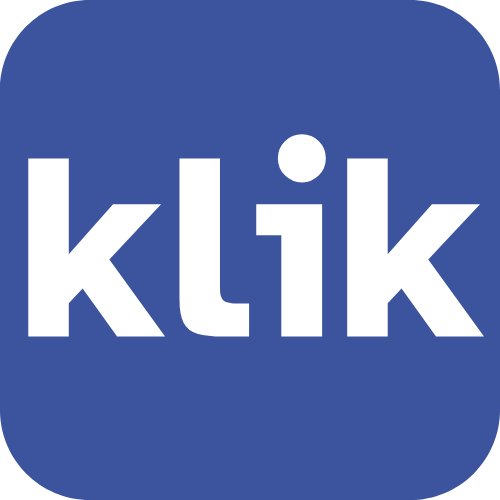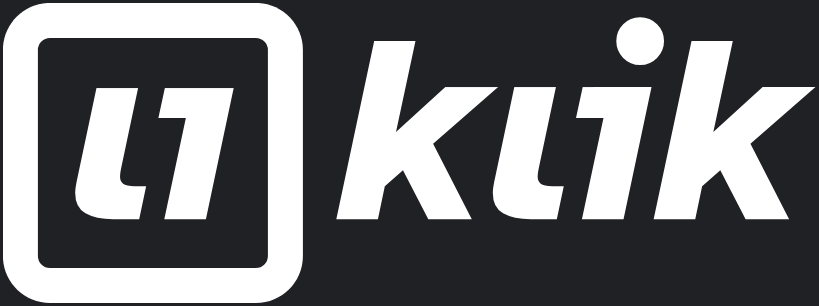Brand Archetypes

The 12 Brand Archetypes
Brand archetypes are shortcuts. They distill big, messy ideas about who you are into a repeatable story people will recognize.
When you get your archetype right, decisions about copy, visuals, offers, hiring, even product roadmaps start to line up. When you’re fuzzy, brand work drifts and marketing channels never quite klik together.
Archetype Cheat Sheet
Want to build a brand people actually feel something for? Start with archetypes.
Innocent
— Trust & Purity
Think: Aveeno Baby. The Innocent archetype promises safety, goodness, and simple joys. It speaks in a pure, optimistic tone and avoids anything edgy or cynical. Customers trust it to do no harm—and feel good doing it. Its biggest fear? Being wrong or impure.
Everyperson
— Belonging & Fair Price
Think: Target. The Everyperson says “you belong here.” It’s approachable, honest, and down-to-earth. No jargon, no elitism—just everyday solutions for real people. The vibe is friendly and inclusive, and it stands against anything that feels exclusive or out of reach.
Hero
— Victory & Performance
Think: Nike. The Hero archetype helps people win. It thrives on challenge, achievement, and bold confidence. Its tone is motivational and powerful, appealing to those who want to be their best and overcome the odds.
Outlaw
— Rule-Breaking Liberation
Think: Harley-Davidson. The Outlaw wants freedom and rebellion. It’s raw, defiant, and anti-establishment—perfect for brands that challenge the status quo. Messaging is often edgy and provocative, with a fear of being powerless or controlled.
Explorer
— Adventure & Freedom
Think: Patagonia. The Explorer archetype lives for discovery and wide-open spaces. Messaging taps into independence and curiosity, with a tone that’s open, reflective, and sometimes rugged. It’s for people who don’t want to be boxed in.
Creator
— Unleash Creativity
Think: Adobe. The Creator archetype exists to imagine, design, and build. It values originality and self-expression, using a voice that’s inspired, artistic, and a little dreamy. Its fear? Mediocrity.
Ruler
— Prestige & Order
Think: Rolex. The Ruler archetype brings structure, luxury, and authority. It’s confident, polished, and knows how to take control. Messaging is sophisticated and aspirational—it’s about leadership, legacy, and avoiding chaos at all costs.
Magician
— Transformative Magic
Think: Disney. The Magician archetype promises transformation. It’s visionary, inspiring, and often a little mystical. The tone is imaginative but grounded in the idea that change is possible—for you, your life, your world.
Lover
— Indulgent Connection
Think: Godiva. The Lover archetype is all about beauty, intimacy, and desire. It’s warm, emotionally rich, and speaks to the senses. It helps people feel special and seen, while quietly fearing rejection or indifference.
Caregiver
— Protective Nurture
Think: Johnson & Johnson. The Caregiver archetype wants to help, protect, and reassure. Its tone is gentle, supportive, and trustworthy. Perfect for brands built around service, health, or family. Selfishness and neglect are its biggest threats.
Jester
— Playful Fun
Think: M&M’s. The Jester archetype brings joy and irreverence. It doesn’t take itself too seriously, using humor, wit, and entertainment to connect. It’s fun, memorable, and never boring—which is exactly the point.
Sage
— Truth & Insight
Think: Google. The Sage seeks knowledge, wisdom, and truth. It helps people make informed decisions with calm, objective insight. The tone is smart, clear, and trustworthy. It’s here to educate, not persuade.
1. Innocent
Motive: Seek happiness, do the right thing, keep life pure.
Signal words: simple, clean, pure, natural, trust, gentle.
Color cues: White, soft pastels, sky blue, light green; lots of whitespace and round iconography.
Examples: Aveeno Baby; Innocent Drinks; Seventh Generation (eco cleaning skew).
Positioning plays:
- Emphasize ingredients, transparency, or nothing‑to‑hide facility tours.
- Use testimonials around peace of mind. "I never worry about…"
- Money‑back or damage‑free guarantees front and center.
Color: Whites and airy pastels. Accent with a soft yellow. If every competitor is washed‑in‑white, add one confident accent to stand out.
“Pure solutions. Honest results.”
2. Everyman
Motive: Belonging. Nobody left out.
Signal words: friendly, honest, local, fair price, community.
Color cues: Mid‑tone blues, denim, warm neutrals, approachable typography, photography with real everyday people (not models).
Examples: IKEA (accessibility, everyday); Levi’s; Target’s "expect more pay less" community mainstream vibe.
Positioning plays:
- Plain language pricing. No jargon. "Here’s what you get, here’s what it costs."
- Loyalty or neighborhood programs.
- Feature user‑generated content: real setups, real results.
Color: Mid‑tone blues, denim, warm grays. Friendly red or orange for calls‑to‑action. Let diverse real‑life photography carry the story if your palette feels plain.
“Made for life. Priced for people.”
3. Hero
Motive: Prove worth through courage and mastery. Help customers overcome big challenges.
Signal words: results, power, performance, win, stronger, faster.
Color cues: Reds, bold blues, black + metallic accents, strong angles, action photography.
Examples: Nike; Under Armour; CrossFit; Gatorade.
Positioning plays:
- Metrics that matter: time saved, weight lost, miles run, ROI generated.
- Challenge‑based campaigns (30‑day transformation, move‑in sprint, business turn‑around toolkit).
- Ambassador stories of overcoming odds.
Color: Reds, bold blues, and black bases signal power. Electric yellow works for urgency pops—think CTA buttons and energy lines.
“Push limits. Win big.”
4. Outlaw
Motive: Break what’s broken. Liberate from the status quo.
Signal words: disrupt, no BS, screw the fees, break free, anti‑[industry cliché].
Color cues: Black, deep reds, high contrast, graffiti or raw textures.
Examples: Harley‑Davidson; Vans (skate culture); BrewDog (punk beer marketing).
Positioning plays:
- Name the villain (hidden fees, corporate lock‑ins, long‑term contracts).
- Offer radically simplified or transparent alternatives.
- Use humor or satire ads calling out industry nonsense.
Color: Black and charcoal with a high‑contrast neon (acid green or hot red) slash. Keep copy minimal so the design still reads.
“Break free. Stay wild.”
5. Explorer
Motive: Freedom to discover, expand horizons, test limits.
Signal words: trail, journey, find your space, go farther, off‑grid.
Color cues: Earth tones, forest greens, slate, topo‑map line art, adventure photography.
Examples: Patagonia; The North Face; Jeep.
Positioning plays:
- Map‑based storytelling. Progress trackers. Miles covered.
- Limited edition gear tied to routes or seasons.
- Content marketing: guides, itineraries, "what to pack for…" (yes, like the one we’re building for St Olav Ways).
Color:
Forest greens, rust, and earthy neutrals. Seasonal pops like sun‑yellow or alpine‑blue keep it fresh.
“Go further. Discover more.”
6. Creator
Motive: Bring ideas to life. Enable expression and customization.
Signal words: build, design, customize, blueprint, create, launch.
Color cues: Wide palette used intentionally; vibrant accent pops on clean grids; hand‑drawn or prototyping visuals.
Examples: Adobe; LEGO; Canva.
Positioning plays:
- Templates + tools that make customers the hero maker.
- User showcases: what our customers built.
- Modular pricing: pick the pieces you need.
Color: Neutral canvas plus rotating bright kits—hot pink, cyan, lime. Let product colorways own the spotlight.
“Dream it. Build it.”
7. Ruler
Motive: Control, stability, structure. Assure customers things are managed and premium.
Signal words: premium, executive, managed, compliant, secure, proven process.
Color cues: Deep navy, royal blue, black, gold, serif typography, grid layouts, crests or seals.
Examples: Rolex; Mercedes‑Benz; Goldman Sachs.
Positioning plays:
- Governance and standards. Certifications. Audited processes.
- Tiered premium service packages (Concierge, Executive, Enterprise).
- Status signals: invitations, memberships, limited access.
Color: Deep navy, black, and touches of gold or metallic foil. Space and restraint signal premium.
“Command excellence.”
8. Magician
Motive: Make transformation feel possible. Turn problems into new realities.
Signal words: transform, unlock, convert, reimagine, change your life.
Color cues: Deep purples, gradients, aurora‑style lighting, spark or glow motifs.
Examples: Disney (imagination to experience); Apple at key launch moments; Airbnb’s early "Belong Anywhere" transformation of travel.
Positioning plays:
- Before/after storytelling. Interactive calculators that show the change.
- Rituals or milestone moments (unlocking a unit, launching a campaign, ringing a bell when a site fills up).
- Bundles that convert clutter into ready‑to‑use life space.
Color: Gradient purples and teals with subtle glow or sparkle. Dark‑mode UI carries the vibe.
“Imagine more. Become more.”
9. Lover
Motive: Experience passion, beauty, closeness.
Signal words: love, indulge, feel, treat yourself, curated, sensual.
Color cues: Rich reds, wines, blush, rose gold, soft lighting, tactile materials.
Examples: Victoria’s Secret; Godiva; Haagen‑Dazs indulgence ads.
Positioning plays:
- Limited artisan or premium finishes. Texture‑heavy photography.
- Language focuses on senses and personal reward.
- Loyalty gifts that feel like presents, not points.
Color: Rich reds, merlot, blush. Rose‑gold or cream as soft highlights. Lean on texture more than saturation.
“Feel the difference.”
10. Caregiver
Motive: Protect, nurture, support.
Signal words: safe, help, here for you, worry‑free, support team.
Color cues: Light blues, soft greens, hospital white + warm accents, gentle rounded UI.
Examples: Johnson & Johnson; Blue Cross Blue Shield; Life Alert.
Positioning plays:
- 24/7 support. Real names and phone numbers.
- Education library: how to pack, insure, move without stress.
- Visuals of staff assisting real customers.
Color: Light blues or greens against clean white. Warm coral CTAs add humanity and avoid medical sterility.
“We’re here for you.”
11. Jester
Motive: Live in the moment. Make life lighter.
Signal words: fun, playful, why so serious, treat, surprise.
Color cues: Bright multi‑color palettes, bold patterns, quirky icon sets.
Examples: M&M’s characters; Old Spice (reboot era); Dollar Shave Club’s launch video.
Positioning plays:
- Humor‑forward ads that subvert category clichés.
- Seasonal gags or easter‑egg promos in packaging and email.
- Gamified loyalty (spin the wheel, mystery locker surprise).
Color: Bold, mixed palette, lime, magenta, sunshine yellow. Balance bright color with clean typography to avoid chaos.
“Serious fun. Zero drama.”
12. Sage
Motive: Seek truth. Help people understand.
Signal words: guide, data, insight, learn, compare, evidence.
Color cues: Neutral palettes, academia blues/greens, crisp charts, editorial typography.
Examples: Google Search (utility of knowledge); The Economist; TED.
Positioning plays:
- Comparison tools, ROI models, ultimate guides.
- Transparent methodology for rankings and recommendations.
- Thought leadership content cadence (monthly deep‑dive posts, data reports).
Color:
Cool neutrals, deep greens, blues. Data‑viz colors must stay legible in both light and dark modes.
“Know more. Choose smarter.”
Putting Archetypes to Work
Most brands lean into one primary archetype and a supporting archetype. Here’s a quick way to discover your brand archetype:
Step 1: Listen to Customers
Pull real phrases from reviews, calls, chat logs. Tag each phrase with the archetype it matches. Which 2‑3 buckets fill up fastest?
Step 2: Stress‑Test Against Business Model
Does your revenue engine line up? Example: A low‑cost, high‑volume model fights with Ruler luxury cues. A boutique premium service struggles with Jester discount humor.
Step 3: Audit Your Assets
Logo + color palette vs archetype cues
Homepage headline vs promise line
Email welcome series tone vs tone snapshot
Social content: which posts perform? Which archetype do winners reflect?
Step 4: Claim the Angle in Positioning Copy
Template: "For [who], [Brand] is the [archetype cue] way to [desired outcome], because [unique proof]."
Example (SkiBrand, the Explorer + Sage hybrid):
"For skiers chasing untouched powder and snappy lines, SkiBrand is the smart way to explore uncharted terrain, because our gear blends alpine-tested performance with data-driven design."
Step 5: Be Consistent
Make sure that your marketing ad copy uses signal words. You landing page uses color cues. Onboarding email triggers the archetype’s emotional payoff within 3 sends.
Find Your Archetype
- Customers come to us because they want: [result]
- Emotion they should feel after buying: [emotion]
- If our brand were a person at a party it would be: [fill in]
- One thing we absolutely are NOT: [fill in]
Final Thoughts
Archetypes aren’t costumes you put on. An archetype should reveal what’s already true or what your market is hungry to see from you. Pick one, support it with a second, and start testing. Watch what resonates across channels. Double down where customers light up.
If you want help finding your brand identity
drop me a note
:)




